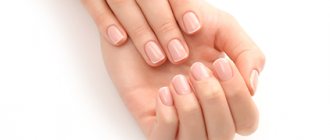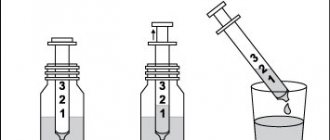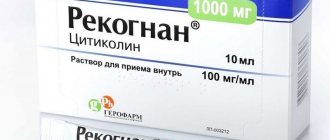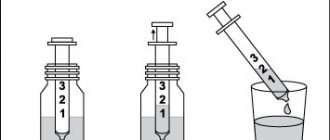From this article you will learn:
- how effective is retinol for the face,
- what forms of retinol are there,
- effective concentrations, timing of application.
The article was written by a specialist with higher medical education.
Retinol is one of the most effective ingredients in anti-aging cosmetics, which helps even out skin tone and texture, increase skin elasticity, and reduce the appearance of fine lines and wrinkles. Retinol is just one of many forms of vitamin A, which also include retinoic acid and retinaldehyde, as well as the so-called retinol esters (for example, retinol palmitate or retinol acetate).
Below you will see that real pure retinol and retinol esters are completely different in effectiveness forms of vitamin A. And it is preferable that retinol for facial skin be present in cosmetic products in the form of pure retinol, and not its esters. And below we will tell you why this is so important and how it affects the effectiveness of correcting age-related skin changes.
The best companies producing retinol products are:
The author of this article has a medical education and problem skin, so I know from personal experience all the nuances of using products with retinol, and which of them really work. In the photo above are the best products with retinol (one of the many that I have tried), which are produced by SkinCeuticals (USA) and ZO® Skin Health (USA). And these companies truly produce the most effective products with pure retinol - compared to many other products I have tried.
In this article we will talk about the criteria for choosing retinol products for the face so that they are truly effective. And of course, the main criteria will be the choice of the correct form of retinol, as well as its correct concentration. We will also talk about the duration of courses for correcting age-related changes using cosmetics with retinol, and when you can notice the first visible results.
pharmachologic effect
This vitamin has a general strengthening effect, normalizes metabolism in tissues, takes part in the formation of cholesterol , mineral metabolism, the synthesis of lipids, proteins and mucopolysaccharides, and redox processes.
It has a positive effect on the functions of the sweat, sebaceous and lacrimal glands, enhances the production of trypsin and lipase , enhances the processes of cell division and myelopoiesis, the synthesis of glycosaminoglycans, slows down the processes of keratinization, and rejuvenates the cell population.
Promotes human adaptation to darkness and stimulates cell regeneration.
Registration number:
P N000550/01
Trade name of the drug:
Retinol palmitate
INN or group name:
retinol
Dosage form:
oily solution for oral administration
Compound:
- Active ingredient:
retinol palmitate (vitamin A) (calculated as 100% retinol palmitate) – 55.1 g (Composition per 1.0 substance: retinol palmitate – 1.7 million IU, butylated hydroxyanisole – 9 mg, butylated hydroxytoluene – 9 mg or retinol palmitate – 1.7 million IU, butylated hydroxytoluene – 17 mg, sunflower oil up to 1.0 g). - Excipients:
butylated hydroxytoluene – 1.0 g, butylated hydroxyanisole – 1.0 g, rapeseed oil up to 1 l.
1 ml of solution contains 100,000 IU of retinol palmitate (1 drop of the drug from a dropper or eye dropper contains about 3,300 IU of retinol palmitate). 1 mg of retinol palmitate corresponds to 1817 IU.
Description:
transparent oily liquid from light yellow to yellow color without rancid odor.
Pharmacotherapeutic group:
Vitamin.
ATX code
(A11CA01)
Pharmacological properties
Vitamin A has a general strengthening effect, normalizes tissue metabolism, participates in redox processes (due to the large number of unsaturated bonds), in the synthesis of mucopolysaccharides, proteins, lipids, in mineral metabolism, and in the processes of cholesterol formation. Enhances the production of lipase and trypsin, enhances myelopoiesis and cell division processes. Has a positive effect on the function of the lacrimal, sebaceous and sweat glands; increases resistance to diseases of the mucous membranes of the respiratory tract and intestines; increases the body's resistance to infection. Strengthens the division of epithelial skin cells, rejuvenates the cell population, inhibits keratinization processes, enhances the synthesis of glycosaminoglycans, activates the interaction of immunocompetent cells with each other and with epidermal cells. Stimulates cell regeneration. Participates in photoreception processes (promotes human adaptation to darkness). The local effect is due to the presence of specific retinol-binding receptors on the surface of epithelial cells.
Indications for use
Hypovitaminosis, vitamin deficiency A. In complex therapy:
- infectious and inflammatory diseases (measles, dysentery, influenza, tracheitis, bronchitis, etc.),
- skin lesions and diseases (cracks, ichthyosiform erythroderma, acne, hyperkeratosis, seborrheic dermatitis, psoriasis, neurodermatitis, some forms of eczema, skin tuberculosis),
- eye diseases (retinitis pigmentosa, hemeralopia, xerophthalmia, keratomalacia, eczematous eyelid lesions),
- gastrointestinal diseases (erosive gastroduodenitis, gastric and duodenal ulcers),
- liver cirrhosis.
Prescribed to prevent the formation of stones in the biliary and urinary tracts.
Contraindications
Hypersensitivity to the components of the drug, hypervitaminosis A, pregnancy, cholelithiasis, chronic pancreatitis, acute inflammatory skin diseases.
Use with caution in case of nephritis, heart failure stage II-III, alcoholism, viral hepatitis, renal failure, in the elderly, in childhood.
Pregnancy and lactation
It is not recommended to take the drug during pregnancy and breastfeeding.
Directions for use and doses
The use of the drug must be carried out under the supervision of a physician. The drug is taken orally after meals early in the morning or late in the evening.
Therapeutic doses for adults with mild and moderate avitaminosis are up to 33,000 IU/day, for children 1000 - 5000 IU/day, depending on age.
For eye diseases, adults are prescribed 50,000 - 100,000 IU per day and at the same time 0.02 g of riboflavin.
In dermatology, in the treatment of acne and ichthyosiform erythroderma in adults, 100,000 - 300,000 IU/day, for children, 5,000 - 10,000 IU/kg per day.
For skin diseases, adults are prescribed 50,000 - 100,000 IU of retinol palmitate per day.
In gastroenterology - 50,000 IU per day.
Single doses of retinol palmitate should not exceed 50,000 IU for adults and 5,000 IU for children. Daily doses for adults are 100,000 IU and 20,000 IU for children. For the treatment of acne and ichthyosiform erythroderma in adults, 100,000 - 300,000 IU.
Side effects
Some patients with long-term use experience dry skin and mucous membranes, increased sensitivity of the facial skin, and seizures. These phenomena resolve on their own when the dose is reduced or the drug is temporarily discontinued.
When treating acne, after 7-10 days of use, an exacerbation of the local inflammatory reaction is observed, which does not require additional treatment and subsequently ceases. In some cases, there is intolerance to the drug, which requires its discontinuation.
Overdose
Long-term daily intake of vitamin A (100,000 IU for children, 200,000 IU for adults) can cause hypervitaminosis A. Symptoms of hypervitaminosis A in adults: headache, drowsiness, lethargy, facial flushing, nausea, vomiting, pain in the bones of the lower extremities, gait disturbance. Children may experience: fever, drowsiness, sweating, vomiting, skin rashes. If symptoms of overdose appear, the drug should be discontinued. Excess retinol palmitate is removed from the body by ingesting alcohol. For severe symptoms of intoxication, oral glucocorticosteroids should be prescribed.
Interaction with other drugs
During long-term therapy with tetracyclines, it is not recommended to prescribe vitamin A (the risk of developing intracranial hypertension increases).
Salicylates and glucocorticosteroids reduce the risk of side effects.
Cholestyramine, colestipol, mineral oils, neomycin reduce the absorption of vitamin A (increasing the dose may be required).
Oral contraceptives increase plasma concentrations of vitamin A.
Isotretinoin increases the risk of toxic effects.
Vitamin E reduces toxicity, absorption, and deposition in the liver. High doses of vitamin E can reduce vitamin A stores in the body.
Weakens the effect of calcium supplements and increases the risk of hypercalcemia.
special instructions
Do not take multivitamin complexes containing vitamin A at the same time to avoid overdose.
Release form
Oily solution for oral administration 100,000 IU/ml.
10, 15, 20, 30, 50, 100 and 200 ml in dark glass bottles with a screw neck and screw-on plastic caps with or without tamper evident, complete with a sealing gasket or dropper.
Each bottle with instructions for medical use is placed in a cardboard pack.
Storage conditions
In a place protected from light at a temperature not exceeding 8 ° C. Keep out of the reach of children.
Best before date
2 years. Do not use after expiration date.
Conditions for dispensing from pharmacies
Over the counter.
Indications for use
Taking Retinol Palmitate is indicated for vitamin deficiency and hypovitaminosis A. It should also be taken in complex therapy for:
- liver cirrhosis;
- diseases of the stomach and intestines: duodenal and gastric ulcers , erosive gastroduodenitis ;
- eye diseases: eczematous lesions of the eyelids, keratomalacia , xerophthalmia , hemeralopia ;
- skin diseases and lesions: skin tuberculosis , some forms of eczema , neurodermatitis , psoriasis , seborrheic dermatitis , hyperkeratosis , acne , ichthyosiform erythroderma , fissures ;
- diseases of an infectious-inflammatory nature: bronchitis , tracheitis , influenza , dysentery and measles .
How does retinol work for acne?
Points of application of retinol and its derivatives for acne:
FOLLICULAR HYPERKERATOSIS
Retinoids, like AHA acids, are able to break the bonds between keratinocytes, stimulating their exfoliation, inhibit the excessive proliferation of the ductal epithelium, thereby cleanse the pores on the face and eliminate their blockage.
CLOSED COMEDONS
Through the hair follicle, retinoids are able to penetrate right up to the ducts of the sebaceous glands, where they also stimulate exfoliation and elimination of accumulated sebum, which stretches the sebaceous glands, turning them into retention cysts.
Result : a large number of dead cells do not accumulate in the ducts and their removal to the outside improves, which removes the blockage of the duct - sebum accumulated in the gland comes to the surface of the skin.
INFLAMMATION
Retinoids are antioxidants that further reduce the production of proinflammatory cytokines and other inflammatory factors (eg, IL-1β, TNF-α, and nitric oxide NO).
Important : inflammation is recognized as a key factor provoking the severity of the acne process, and, therefore, the main starting point for acne therapy.
PATIENT
Retinoids indirectly inhibit the proliferation of P. acne bacteria, preventing the formation of antibiotic resistance in bacteria that form skin microbiologists.
IMMUNE FUNCTION OF THE SKIN
Retinoids block important inflammatory pathways such as AP-1, as well as leukocyte migration and toll-like receptors. In addition, retinoic acid (one of the forms of retinol, formed inside the skin during the transformation of retinol) affects Langerhans cells - skin macrophages, increasing their readiness for phagocytosis and migration to the site of inflammation.
PREVENTION OF POST-ACNE
According to clinical observations, early use of retinoids to correct acne minimizes the risk of scarring.
Also, topical retinoids reduce the risk and clinical manifestation of post-acne hyperpigmentation. The higher the dose of topical retinoids, the greater the preventive effect.
Contraindications
This vitamin is not recommended for hypersensitivity to the contents of the drug, pregnancy, hypervitaminosis A , acute inflammatory skin diseases, chronic pancreatitis and cholelithiasis .
In case of renal failure , viral hepatitis , alcoholism , heart failure of the second and third stages, nephritis it is necessary to take with caution.
Homemade face masks with retinol
To make such masks, you need to buy retinol in capsules or ampoules. This can be done either at a pharmacy or at a cosmetic store. Before the procedure, the skin must be thoroughly cleaned and exfoliated with a scrub. This will make her more susceptible to active substances.
Curd mask
Rejuvenates and smoothes the skin. Take 1 ampoule of palmitate, 7 g of thicker cream and 15 g of cottage cheese. Mix with a blender and spread over your face. Leave the mask on for half an hour and rinse off.
Mask with persimmon
Protects the skin from harmful influences and corrects the oval of the face. You need to mix puree from the pulp of 1 persimmon, 2 drops of vitamin A and 2 drops of vitamin A. Apply for 30 minutes and rinse with herbal decoction.
Instructions for use of Retinol Palmitate (Method and dosage)
It is best to take the drug early in the morning after meals or late in the evening. For mild and moderate vitamin deficiencies , up to 33,000 IU per day is recommended for adults, and from 1,000 to 5,000 IU per day for children.
In dermatology, for acne and ichthyosiform erythroderma, adults are recommended from 100,000 to 300,000 IU per day. For eye diseases, adults are recommended to take from 50,000 to 100,000 IU per day along with 0.02 grams of Riboflavin .
Nosological classification (ICD-10)
- A09 Diarrhea and gastroenteritis of presumably infectious origin (dysentery, bacterial diarrhea)
- A15-A19 Tuberculosis
- B05 Measles
- E50 Vitamin A deficiency
- E50.0 Vitamin A deficiency with conjunctival xerosis
- E50.4 Vitamin A deficiency with keratomalacia
- E50.5 Vitamin A deficiency with night blindness
- E55.0 Active rickets
- H01.1 Non-infectious dermatoses of the eyelid
- H10.1 Acute atopic conjunctivitis
- H10.9 Conjunctivitis, unspecified
- H16 Keratitis
- J04 Acute laryngitis and tracheitis
- J06 Acute upper respiratory tract infections of multiple and unspecified localization
- J18 Pneumonia without specifying the pathogen
- J20 Acute bronchitis
- J22 Acute respiratory infection of the lower respiratory tract, unspecified
- J39.9 Upper respiratory tract disease, unspecified
- J42 Chronic bronchitis, unspecified
- J44.9 Chronic obstructive pulmonary disease, unspecified
- K20 Esophagitis
- K25 Stomach ulcer
- K26 Duodenal ulcer
- K29.5 Chronic gastritis, unspecified
- K29.9 Gastroduodenitis, unspecified
- K52 Other non-infectious gastroenteritis and colitis
- K74 Fibrosis and cirrhosis of the liver
- L11.0 Acquired keratosis follicularis
- L30.9 Dermatitis, unspecified
- L40 Psoriasis
- L44.0 Pityriasis red hairy pityriasis
- Q80 Congenital ichthyosis
- T14.1 Open wound of unspecified body area
- T30 Thermal and chemical burns of unspecified location
- T33-T35 Frostbite
Overdose
regular use of this vitamin can lead to intoxication, hypervitaminosis A. Symptoms of overdose in adults are:
- gait disturbance;
- pain in the bones of the legs;
- nausea and vomiting ;
- facial hyperemia;
- lethargy;
- drowsiness;
- headache.
In children, the symptoms are as follows:
- skin rashes;
- vomit;
- sweating;
- drowsiness;
- temperature increase.
If you observe the above symptoms, you must stop taking the vitamin and take alcohol. In case of severe intoxication, glucocorticosteroids .
What retinoids to use for acne
Having understood how retinol works for acne, the question arises: what form of retinol is best to use to treat acne?
To answer this question, you need to understand:
- When treating acne, the goal is not to activate fibroblasts and basal keratinocytes to stimulate cellular renewal and synthesis of the dermal matrix.
- With acne, skin barriers are often compromised. Therefore, the requirement for the selected Retinoid is to minimize aggression and eliminate irritating effects that could provoke the client’s desire to refuse therapy.
Irritation from retinol
Conclusion
At the beginning of therapy, give preference to atraumatic forms of Retinoids without affecting RAR receptors (fibroblasts and basal keratinocytes). Pure retinol and retinol acetate are excluded from acne therapy, especially in the initial stages of treatment.
Interaction
Simultaneous use with glucocorticosteroids and salicylates reduces the risk of side effects. Neomycin , mineral oils, colestipol and cholestyramine reduce the absorption of Retinol Palmitate.
Vitamin E reduces the absorption and toxicity of Retinol Palmitate, so high doses of this vitamin reduce the body's of vitamin A. The use of oral contraceptives increases the concentration of Retinol Palmitate in plasma.
Pure retinol -
Real retinol, and not its esters, is already found in not too many cosmetic products. Moreover, very often manufacturers resort to deception - on the packaging in large letters they write that the product contains retinol, and in the ingredients in small print they may already write about retinol palmitate. The most important thing you should know about cosmetics with pure retinol is its concentration. Let's figure out which concentrations are effective.
1) Effective concentration of retinol –
We have already said above that the most effective form of vitamin A is “retinoic acid” (tretinoin). There are a large number of clinical studies that show that the optimal therapeutic concentration of tretinoin for the treatment of aging skin is 0.025%. And this is exactly the concentration recommended by the FDA (the most authoritative organization in the world that studies the effectiveness of pharmaceuticals and treatment methods). And as you will see below, this has a direct bearing on retinol.
Evidence base: 1) study “Griffiths CE, Kang S, Ellis CN et al. Two concentrations of topical tretinoin cause similar improvement of photoaging but different degrees of irritation." The study followed patients over 48 weeks and concluded that using a lower 0.025% tretinoin concentration for skin aging treatment had exactly the same effects as a higher 0.1% concentration. This is how the effective therapeutic concentration was determined.
2) Study “Olsen EA, Katz HI, Levine N et al. Tretinoin emollient cream: a new therapy for photodamaged skin. J Am Acad Dermatol 1992" shows that the use of products with tretinoin concentrations below 0.01% was not very effective. In this case, there was no significant difference in the condition of the skin before and after. And this also has a direct bearing on the effective concentration of retinol.
Important: the fact is that 0.1% pure retinol is approximately equivalent in effectiveness to 0.0025% tretinoin. It turns out that the 0.025% concentration of tretinoin recommended by the FDA for the correction of aging will correspond to 1.0% of pure retinol. That is why the world's leading manufacturers of anti-aging cosmetics with retinol, SKINCEUTICALS® and ZO® SKIN HEALTH, have products with 1.0% pure retinol in their lines. And these products are intended specifically for the correction of wrinkles in older patients.
Products with 0.3% pure retinol are suitable for correcting fine lines, as well as increasing skin elasticity, evening out skin tone and texture (products with 0.5% should add shallow wrinkles to the above). In addition, products with 0.1-0.3% pure retinol are suitable for correcting wrinkles in the corners of the eyes (while the 0.1% concentration is suitable for daily use, and 0.3% - only 3 times a week). The fact is that the skin around the eyes is thinner and more sensitive, and therefore lower concentrations will be effective here.
In addition, a 0.1-0.3% concentration can be used to prevent aging, as well as to acclimate the skin to retinoids (as a preparation before using a more concentrated 1.0% form of pure retinol).
2) Duration of use of retinol –
The study (“Two concentrations of topical tretinoin cause similar improvement of photoaging but different degrees of irritation” Griffiths CE, Kang S, Ellis CN et al.) shows that to achieve significant correction in older patients, the course of treatment should be at least 48 weeks . If we are talking about an average correction, the duration of the course should not be less than 36 weeks. And in any case, for any patients, the course should not be less than 24 weeks.
But there is one exception. Products with retinol can be prescribed for preparation before hardware rejuvenation methods, such as fractional RF lifting or laser resurfacing. In this case, even a 2-3 month course of pure retinol can significantly increase the effect of hardware methods. If you want to be guaranteed to get a pronounced anti-aging effect, and sooner than after 1 year, then the following scheme is suitable.
Carry out a course of 3 months with effective concentrations of pure retinol, after which do several fractional RF lifting procedures. These can be the following devices - 1) the “Venus Viva” device with a special “NanoFractional RF” applicator included in the kit, 2) a special tip for fractional grinding “Sublative RF”, which comes with the eTwo™ and Elos Plus™ devices. And it will be very effective.
3) Retinol microencapsulation technology –
If we talk about retinol esters, although they are not very effective, they have good stability. Those. the retinol in them is not destroyed by exposure to light and air. But pure retinol is quickly destroyed by both. Therefore, high-quality manufacturers use microencapsulation (or liposome) technology to stabilize pure retinol. In these cases, pure retinol molecules will be hidden in microcapsules or liposomes.
This protects pure retinol from degradation. When such technologies did not yet exist, high-quality manufacturers produced their products with pure retinol - only in opaque containers with a pump (dispenser). If retinol comes encapsulated, then such a dispenser is no longer needed. In addition, retinol in microcapsules has another excellent property - it significantly reduces the risk of skin irritation, which often occurs when using retinoids.
Important: many manufacturers of inexpensive cosmetics may not indicate the concentration of retinol at all. In addition, most manufacturers use non-encapsulated pure retinol in a cream or serum - and the product can come in a container without a dispenser, or in a transparent bottle (serum). Please note that if a manufacturer uses stabilized retinol in microcapsules or liposomes, this will always be written on the packaging. But don’t be confused: sometimes manufacturers write that their product contains a stable form of retinol, but we are talking about retinol palmitate, and not stabilized pure retinol (24stoma.ru).
Retinol Palmitate price, where to buy
You can buy Retinol Palmitate capsules (10 pieces) in Moscow for an average of 15 rubles.
The price of a solution in oil (10 milliliters) in Ukraine is 150 hryvnia.
- Online pharmacies in RussiaRussia
- Online pharmacies in KazakhstanKazakhstan
ZdravCity
- Retinol palmitate solution for oral administration, oily 100000 IU/ml 50 ml bottle 1 pcs JSC Retinoids
312 rub. order
Pharmacy Dialogue
- Retinol palmitate (vial 100000IU/ml 10ml)Retinoids
122 RUR order
- Retinol palmitate (vial 100000IU/ml 50ml)Retinoids
RUB 284 order
show more
Composition and release form
| Oral solution | 1 ml |
| retinol palmitate | 100000 IU |
| (1 drop of solution from a dropper or eye dropper contains 3300 IU) | |
| 1 mg of retinol palmitate corresponds to 1817 IU | |
| excipients: butylated hydroxytoluene; butylated hydroxyanisole; rapeseed oil |
in dark glass bottles of 10 ml; in a cardboard pack 1 bottle or in dark glass bottles of 10 ml, complete with a dropper; 1 set in a cardboard pack.





